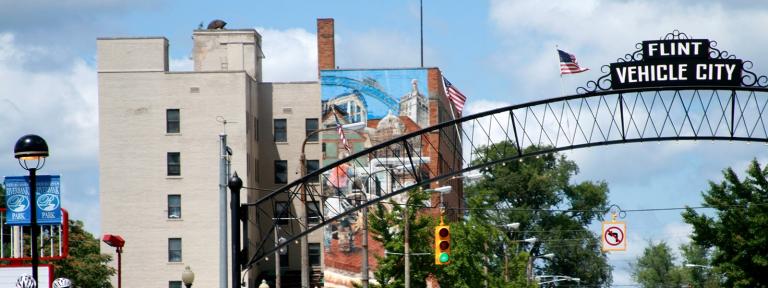
The impact is small. Really just a blip on the economic radar. So small, in fact, that the accounting office at the City of Flint administrative offices may not even measure how much the downtown project office spends each week. Still, as the saying goes, every cent counts.
For the past few years, Kettering faculty member Dr. Homayun Navaz and a team of researchers have studied the absorption of chemical elements into various surfaces and how these elements can create a potentially deadly environment when released into the atmosphere by accident or design. This $2.9 million Chemical Agent Fate Research Project is funded by a federal contracting corporation and uses computer-based mathematical models to predict the spread and persistence of a chemical in the air, on the ground and on various household surfaces. The primary goals of this project are to determine how long chemical elements remain active following release and provide a simulation of scenarios using mathematical analyses to predict what would happen with a chemical release to aid officials in taking preventative actions.
Since the inception of the Chemical Agent Fate Research Project in 2005, Navaz has attracted funding and support in excess of $5 million. Additionally, he and his team acquired an office suite at 432 S. Saginaw St. in downtown Flint, where the group performs computer simulations of possible real life scenarios and validations of model predictions with experimental data. For Navaz, the opportunity to have his staff of 15 work in downtown and spend money at local restaurants and stores within the city limits is not just a chance to support the Flint economy in a small way, it's a responsibility.
"We have meetings with executives from the contracting corporation at our downtown office, because we feel it's a chance to show them what Flint is really like," he said. "If we can support the community through the work we do on this project, that's an added bonus," he added.
Currently, the city is experiencing a small renaissance in terms of new businesses coming back into the area, which is particularly encouraging, given the mass exodus of automotive jobs from the area during the 1980s and 1990s. For example, a computer firm announced plans to move into the former General Motors Tech Center on South Saginaw in the coming months. In addition, the Community Foundation for Greater Flint will move into a newly renovated home at 502 and 506 S. Saginaw, thus marking even more positive development news. These developments have given way to new jobs, which is important, particularly since the State's unemployment level reached above 7.20 percent over the last few weeks.
Much of the work Navaz and his staff engage in at the downtown office involves analyzing test results sent to him from project partners. The team typically interfaces the computer models of project partners with those in Kettering's Chemistry Dept. led by Dr. Ali Zand, associate professor of Chemistry, via remote access from the Flint downtown office.
"We've been fortunate to receive strong support from our friends in Washington D.C. for this project and our hope is to see the University establish a separate entity for this project in Flint, one that would help the city's and Michigan's economy," Navaz said, adding, "then we can go after additional dollars to support this entity, which could bring even more economic support to the area and region
Although the primary focus of the research project is based in science, Navaz said that with staff members working, eating and sometimes living in Flint, there is a small amount of money being spent in town everyday. By his estimations, if each individual spends $10 on meals each day during a five-day work week, this comes to approximately $750 a week spent at local establishments. Based on a 48-week work year, this is $36,000 a year.
Furthermore, the news regarding the technical aspects of the project is increasingly positive. In fact, Navaz will present current progress on this original research at several federal government-hosted conferences in August. Additionally, his contacts in Washington, D.C., and at the federal contracting corporation tell him that this project is the only one of its kind that continues to yield new and important information about the absorption of chemicals into our environment.
Given the current state of affairs with U.S. foreign policy and looming threats of terrorism, this project takes on greater and greater significance, with the increased prospect of additional funding for the future. This, in turn, will mean that project staff will continue working, living and eating downtown, which means additional dollars going back into the community.
For more information about the Chemical Agent Fate Research Project, contact Dr. Homayun Navaz at hnavaz@kettering.edu.
Written by Gary J. Erwin
810-762-9538
gerwin@kettering.edu